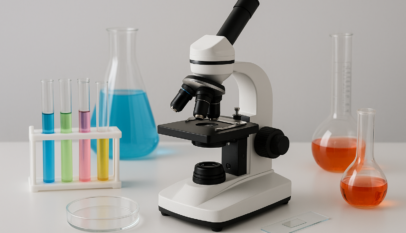
Laboratory equipment encompasses a wide range of tools and instruments essential for conducting scientific experiments, research, and analysis. These items vary from basic glassware and measuring devices to advanced analytical instruments, all designed to improve accuracy, efficiency, and safety in the lab. They are fundamental for enabling researchers and scientists to perform reliable and reproducible work.
The choice of laboratory equipment depends on the specific needs of the research or testing environment, covering fields like chemistry, biology, medicine, and industrial applications. Trusted suppliers across the globe provide quality equipment with features to support different budgets and technical requirements. Understanding the types and functions of these tools is crucial for running an effective laboratory.
Investing in the right equipment directly impacts the quality and reliability of scientific results. It also enhances workflow by reducing errors, increasing productivity, and ensuring compliance with safety standards. This article will explore the key types of laboratory equipment and their uses, providing a clear overview for anyone involved in scientific work.
Types of Laboratory Equipment
Laboratory equipment spans a range of tools designed for specific scientific tasks. These include devices for precise analysis, containers made of various materials, tools to measure accurately, and gear to ensure safety.
Analytical Instruments
Analytical instruments are essential for identifying chemical compositions and physical properties. Common examples include spectrophotometers, which measure light absorbance or transmission, and chromatographs, used to separate components in mixtures.
Microscopes allow the examination of specimens at a microscopic level, critical in biology and materials science. Balances provide highly accurate mass measurements necessary for preparing solutions or quantifying samples.
These instruments often require calibration and maintenance to maintain accuracy and reliability. Their precision directly influences experimental results and data quality.
Glassware and Plasticware
Glassware typically includes beakers, flasks, test tubes, and pipettes. Glass is preferred for its chemical resistance, transparency, and ability to withstand heat. Borosilicate glass is common due to its thermal stability.
Plasticware, such as disposable pipettes, centrifuge tubes, and petri dishes, are used when breakage or contamination risks must be minimized. Some plastics resist chemicals but may not tolerate high temperatures.
Both types must be chosen based on chemical compatibility, sterility needs, and the nature of the experiment. Proper cleaning and storage extend their usability and ensure accurate results.
Measurement Tools
Measurement tools provide quantitative data crucial to experiments. Common devices include rulers and calipers for physical measurements, pH meters for acidity, and thermometers for temperature readings.
Volumetric tools such as burettes, graduated cylinders, and micropipettes enable precise liquid measurements needed in titrations and solution preparation. Calibration is critical to maintain their accuracy.
Accurate measurement tools support repeatability and consistency in experiments. Using tools appropriate to the scale and type of measurement reduces errors.
Safety Devices
Safety devices protect users from hazards like chemical exposure, burns, and contamination. Standard equipment includes goggles, lab coats, and gloves to prevent direct contact with harmful substances.
Fume hoods remove toxic fumes and vapors from the workstation. Eyewash stations and safety showers provide emergency decontamination.
Proper use and maintenance of safety devices are mandatory to comply with regulations and ensure a safe working environment. Training on these devices is essential for all laboratory personnel.
Proper Use and Maintenance
Laboratory equipment requires routine attention to ensure it functions accurately and safely. This involves verifying measurement accuracy, removing contaminants, and organizing equipment in a manner that protects its integrity and accessibility.
Calibration and Validation
Calibration is essential for maintaining measurement accuracy. Equipment like pipettes, balances, and spectrophotometers must be calibrated regularly using standard reference materials or certified calibration tools. Validation confirms that the equipment performs within defined parameters.
It is important to document all calibration activities, including dates, methods, and results. Frequency depends on usage, manufacturer guidelines, and regulatory requirements. Uncalibrated equipment can lead to incorrect data and compromised experiment reliability.
Regular validation checks can detect drift or malfunctions early. Validation should occur after any repair or software update, as well as at scheduled intervals, to ensure ongoing compliance with performance standards.
Cleaning Procedures
Cleanliness eliminates residues that could interfere with experiments or damage equipment. Cleaning methods vary by equipment type—glassware typically requires detergent and rinsing with distilled water, while electronic devices need specialized wipes or solutions.
Use non-abrasive materials to avoid surface damage. Follow manufacturer recommendations for cleaning agents and procedures. Consistency in cleaning prevents cross-contamination between experiments and reduces equipment wear.
Disinfectants should be selected based on the risk level of contamination and compatibility with equipment surfaces. Routine inspections should ensure cleaning has been thorough and effective before equipment is stored or used again.
Storage Best Practices
Proper storage prevents damage and preserves equipment functionality. Store sensitive instruments in stable environments with controlled temperature and humidity. Avoid stacking heavy items on delicate devices.
Label storage areas clearly to facilitate easy retrieval and reduce handling errors. Use dedicated containers or covers to protect equipment from dust and chemical exposure.
Routine checks on stored equipment ensure that protective measures remain effective and that no signs of deterioration or contamination are present. Effective storage extends equipment lifespan and maintains laboratory safety.
British Virgin Islands Company Registration Guide for Seamless Offshore Setup
Registering a company in the British Virgin Islands (BVI) is a straightforward process tha…









